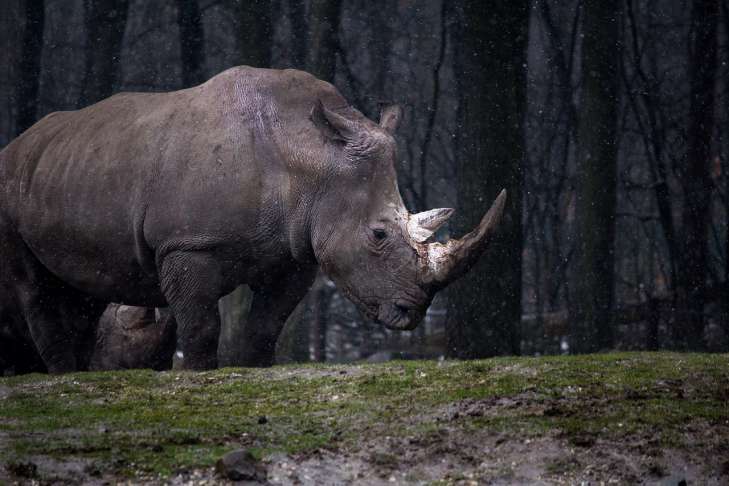The white rhinoceros is the largest representative of the rhinoceros family. Inhabitant of savannas and woodlands.
This is a huge mammal - the weight of old males reaches 4-4.5 tons.
Interesting Facts
All representatives of the rhinoceros family are myopic and see objects only at a short distance.
Despite its strength, rhinoceros horn is not made of bone tissue, but of keratin - the same material as human nails and hair.
White rhinoceroses live in dense forests, savannas and plains, where there are drinking springs, and feed on grass.

They live in small groups, mainly consisting of females. Males are usually solitary.
Despite its apparent slowness, the armored rhinoceros has excellent reaction and mobility.
In case of danger or in self-defense, the animal can reach a speed of 40 km/h in short areas.
Its vision, like all rhinoceroses, is very weak, its hearing and sense of smell are much better.
Why are rhinos endangered
Large mammals such as elephants and rhinoceroses are the architects of ecosystems, as they ensure the balance of forests and grasslands, allowing many other species to exist.
From 1970 to 1992, poachers destroyed about 96% of the black rhino population.
Rhinos have been on the brink of extinction before. In the 60s there were about one hundred thousand rhinoceroses, but as a result of poaching there were only 2 thousand 400 of them left.
The trade in rhino horns was banned in 77 by the Convention on International Trade in Endangered Species of Wild Fauna and Flora, CITES.
In 2018, the last male northern white rhinoceros died at Ol Pejeta Conservancy in Kenya, according to Reuters.
Previously, we talked about the role of butterflies in the ecosystem.









